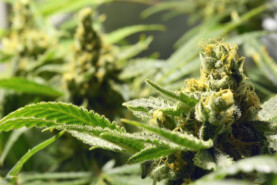Posted on 19 Jun 2023
In 1994 Colombia decriminalized the personal use and self-cultivation of several cannabis varieties, although production, distribution and commercialization remain penalized by law.
In Colombia’s war on drugs, much of the enforcement drive has been directed at the cannabis market. According to official data, in 2020 cannabis constituted more than 50% of all seized illicit drugs in the country, and until 2016, 40% of these seizures were of quantities that were less than the legally permitted amount for personal possession. This situation may be about to change.
In 2009, President Uribe’s government reformed an article of the Colombian constitution covering health rights by including the prohibition of the possession of psychoactive substances. Although this article did not affect the right to consume, it has prevented the development of a regulated domestic market for cannabis. Several legislative efforts in the past have tried unsuccessfully to amend this article. However, Congress may be about to make history if the required number of votes that are needed to amend the article are confirmed before Tuesday this week.
Modifying the Colombian constitution is not an easy process. It needs to pass eight debates: four in the House of Representatives and four in the Senate. For the first time in history, this legislative effort made it through to the final round of debates. However, promoters of the reform fell short of the number of votes needed, casting 49 out of the 54 required in the ballot. If the quota is not reached in Congress before 20 June, according to the law, the reform will be archived and would need to start again from scratch. If it passes, the path for the regulation of cannabis will begin.
But why is reform of cannabis legislation being debated in the first place? There are two main areas where its regulation could be beneficial for Colombia.
Firstly, in terms of consumption and the public health impact, scientific evidence shows that the decriminalization of cannabis has had no effect on the age of first use, a key determinant for the prevention of problematic use. In 75% of the studies carried out to date in which it was possible to establish causal relationships, it has been found that regulating adult use of cannabis has resulted in stable consumption or reduced consumption among young people. Evidence also shows that regulation of adult use has reduced alcohol consumption in young people between the ages of 15 and 24, and mortality associated with opioid use.
Secondly, evidence also shows that regulation can reduce crime rates. In the state of Washington, for example, research has suggested that regulated adult use reduced rape by 15% to 30% and theft by 10% to 20%. In Colorado, the introduction of adult-use cannabis dispensaries significantly reduced non-violent crime and offences associated with the use of alcohol and other substances.
In the Colombian case, there may be doubts about the effects on violence reduction because, as has been pointed out by some members of Congress, the most trafficked illicit drug in the country is cocaine, not cannabis. However, in cannabis-producing regions, such as Cauca, it is important to take into account that regulation has the potential to reduce violence, as is the case in urban micro-trafficking spaces. Additionally, a direct outcome of cannabis regulation would be a more efficient allocation of police and judicial resources to reduce crime and improve the relationship between police and citizens. Hence, the potential effects of regulation in Colombia are significant.
Much of the debate in Congress has been around the risk associated with cannabis use. However, that is not the point of the proposed reform. Like other regulated substances, such as alcohol, cannabis use has risks. The discussion is about the appropriate regulatory changes needed to manage these risks, as has been achieved with other substances. The most effective routes to address these risks are by pursuing public health measures and harm reduction approaches – changes that the new regulation will permit.
In the US, Canada and Uruguay, 21 states have already taken this bold step, using various models and approaches to regulation. Colombia can learn from the mistakes and challenges of these models.
The details of the regulatory framework to implement this public health approach would also need to be discussed. Ushering in a regulated market will take time and must be designed in such a way that the actors that currently operate in this economy progressively transit to the new regulated system.



